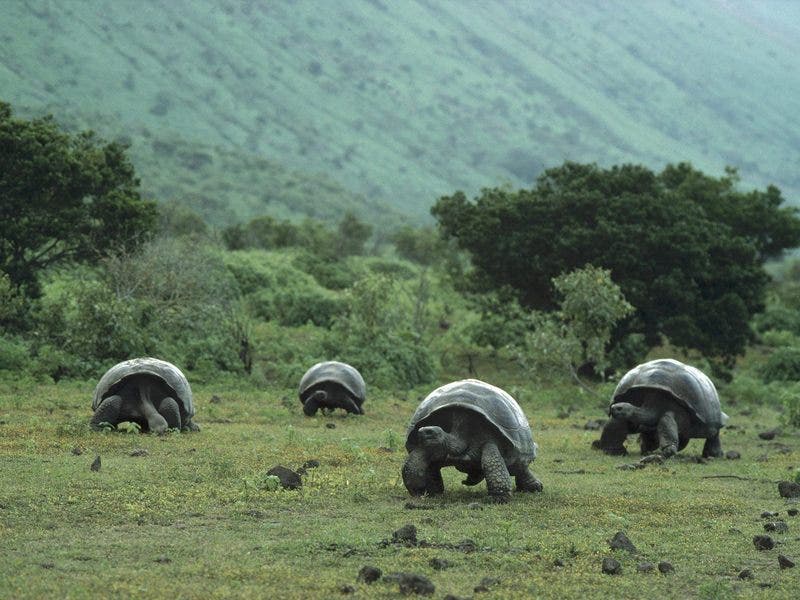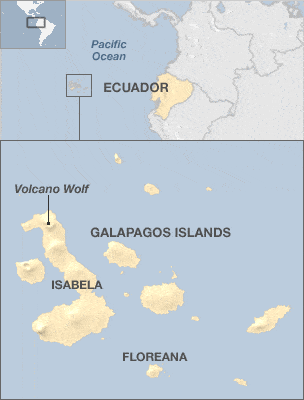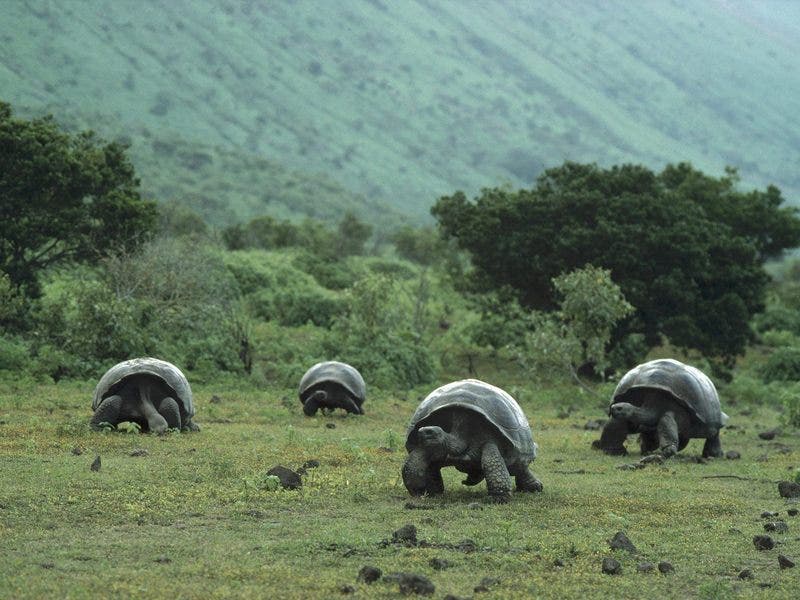
A subspecies of the the giant Galapagos tortoise, Chelonoidis elephantopus, long thought to be extinct for more than 150 years, is now believed to might still exist, scientists say.
Yale University researchers conducted a highly thorough genetic analysis of various Galapagos giant tortoises in the region, which allowed them to speculate that at least a few dozen specimens of the elusive Chelonoidis elephantopus might still be alive!
In 1835 during his antological Beagle expedition to the archipelago, Charles Darwin extensively studied the giant tortoises there, which he reserved a special chapter in his theory of evolution by natural selection. Sadly, just a few years before Darwin set fist foot on the islands, the C. elephantopus, a native of the Floreana Island, was already considered extinct due to excessive whaling – the only signs left behind of its once existence were its giant shells.
The Yale team visited Volcano Wolf on the northern tip of Isabela Island in 2008 and took blood samples from more than 1,600 tortoises. These samples were then compared with other genetic signatures from an extensive genetic database filled with all the known living and extinct species of tortoises. What the reserachers found was nothing short of amazing.

“Around Volcano Wolf, it was a mystery – you could find domed shells, you could find saddlebacks, and anything in between,” recounted Gisella Caccone, senior scientist on the new study.
“And basically by looking at the genetic fingerprint of the hybrids, if you do some calculations you realise that there have to be a few elephantopus around to father these animals.
“To justify the amount of genetic diversity in the hybrids, there should be something like 38.”
Alright, but if they were declared extinct and no specimen was sighted since then, how can this giant tortoise subspecies still be roaming the wild? The leading theory at the moment is that, while the species was wiped out by hunters in its native Floreana Island, the same hunters must have brought them along on their ships. Some tortoises must had made it to shore on Isabela, somehow, and established a presence.
This might sound plausible, but what then of these living specimens – where are they if this is the case? Well, one might think that spotting a giant, slowpoke Galapagos tortoise is an easy feat, however this couldn’t be farther away from the truth. The local vegetation of the Volcano Wolf is hard and lush, making it extremely difficult to explore it. Also, the perfectly camouflaged carapace of the tortoises make them extremely difficult to spot, and only a highly trained eye might have a chance. Dr. Caccone brought in 40 people during her last expedition in search for specimens or even clues of the C. elephantopus existance, however they were forced to stop after a while when supplies ran out.
“To our knowledge, this is the first report of the rediscovery of a species by way of tracking the genetic footprints left in the genomes of its hybrid offspring,” says former Yale postdoctoral researcher Ryan Garrick, now assistant professor at the University of Mississipi.
Even if no purebreds can be found, there’s a good chance that the species can be resurrected through the intensive breeding of hybrids. Curious, isn’t it, how man chases down ghosts of the past he himself slew.









